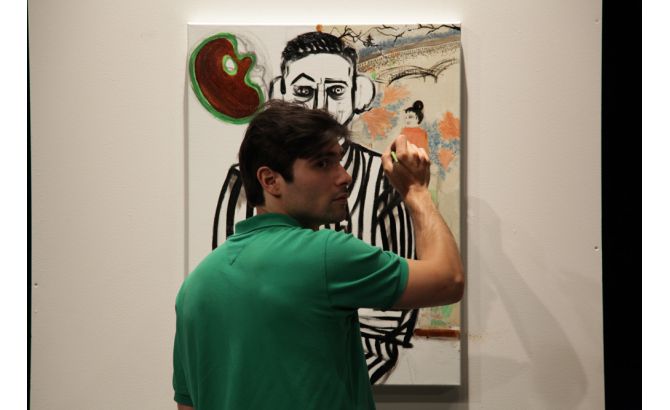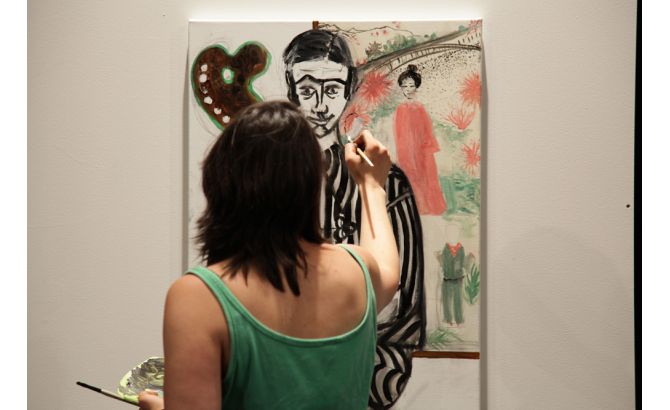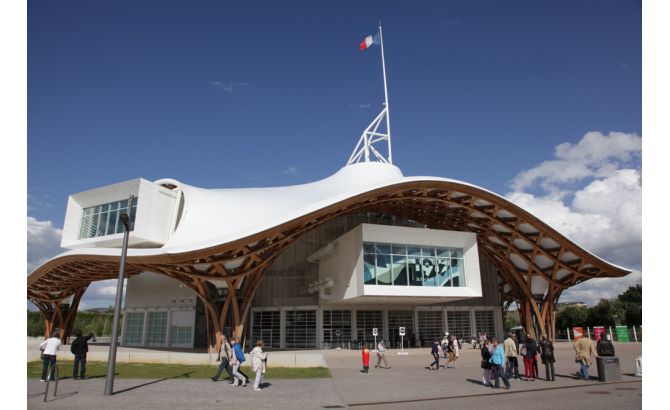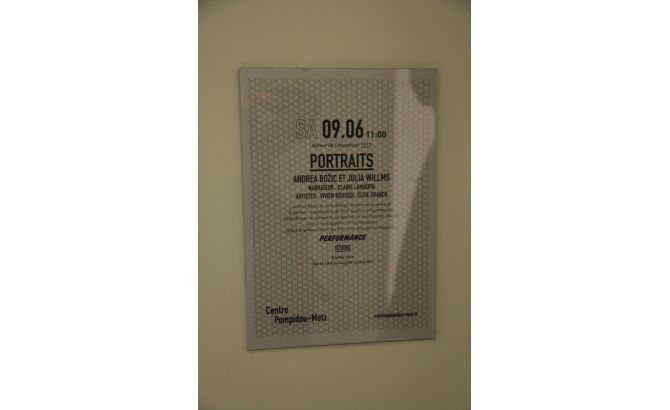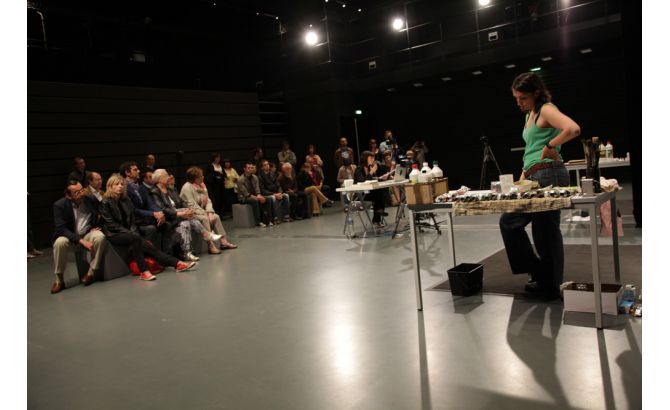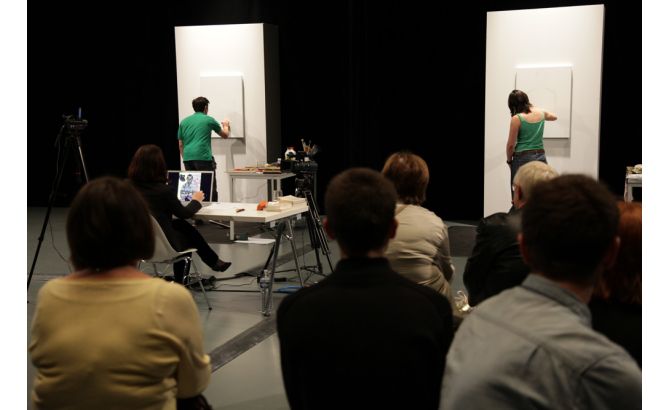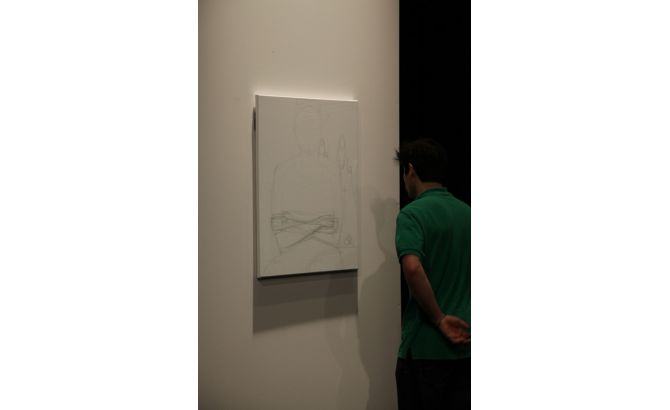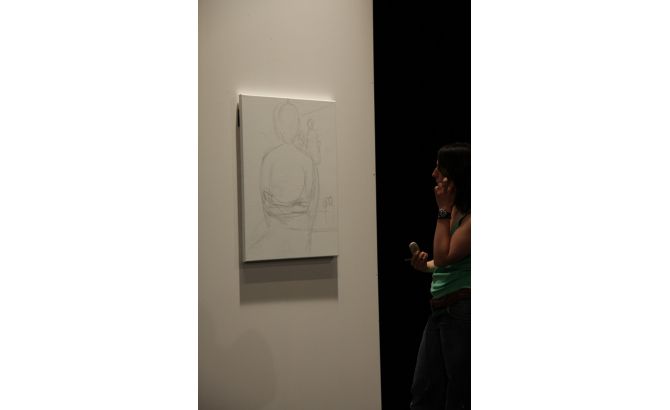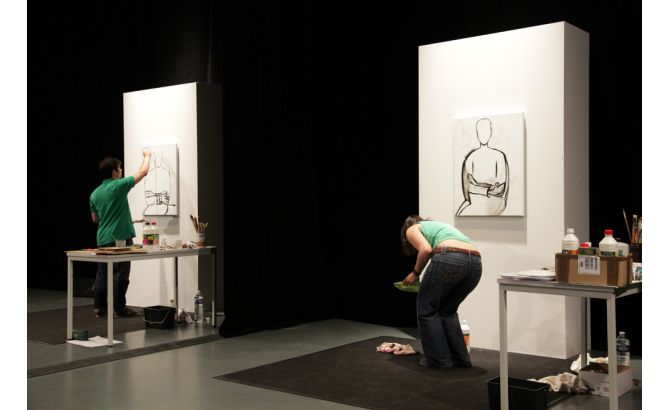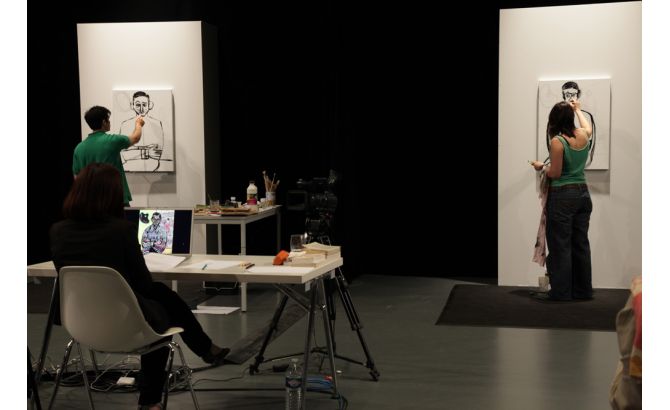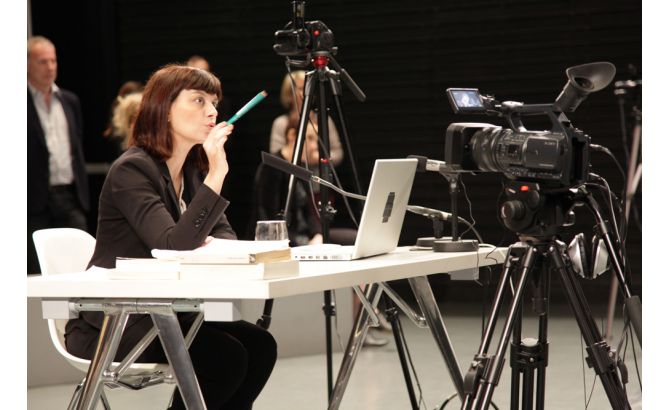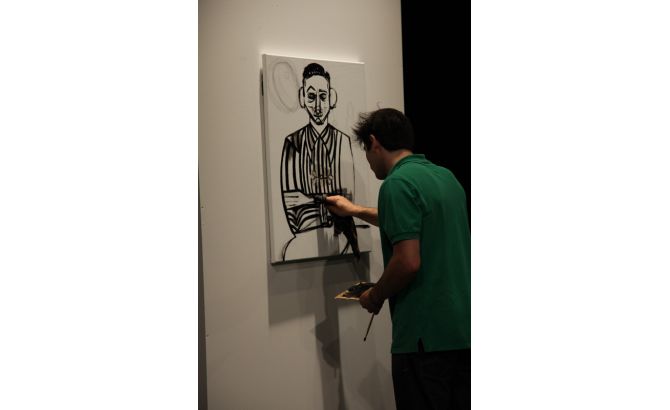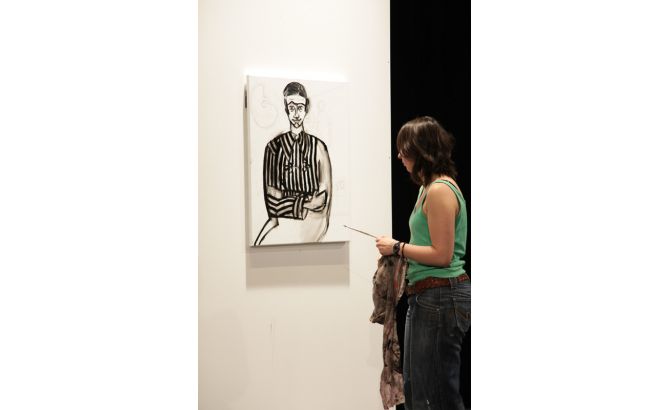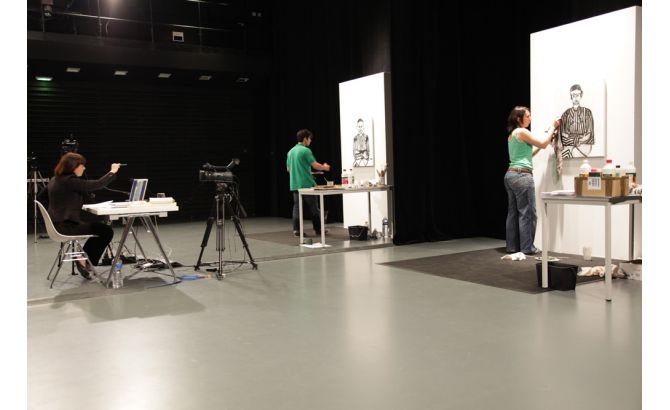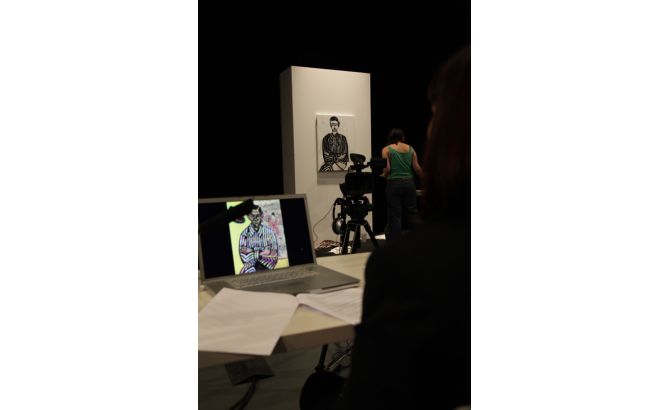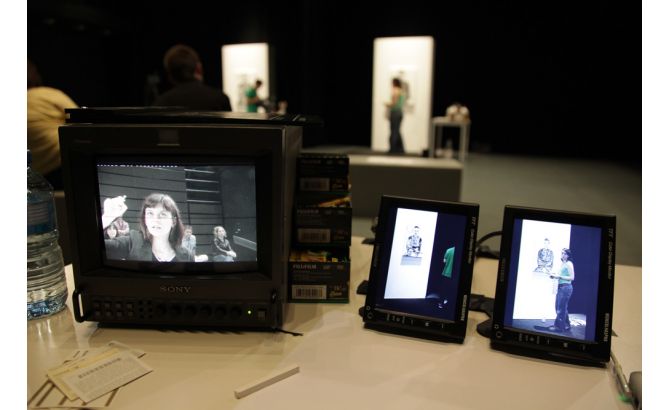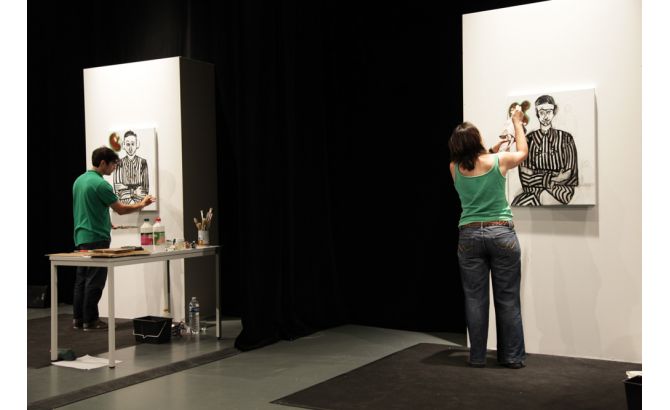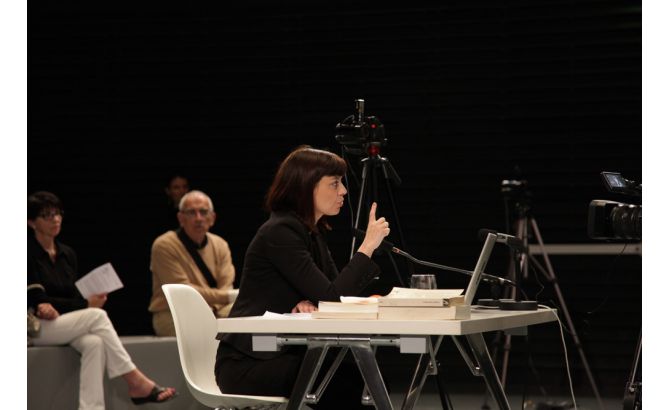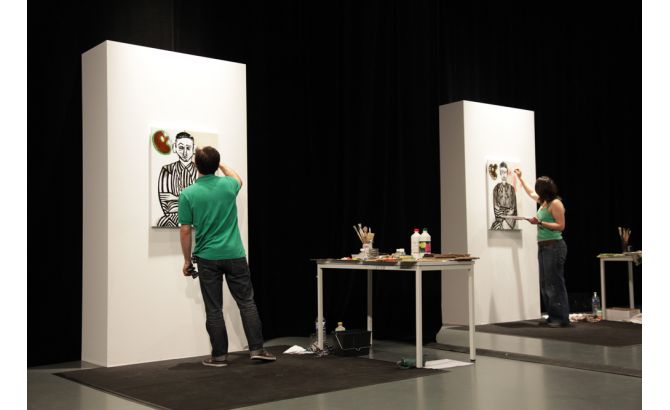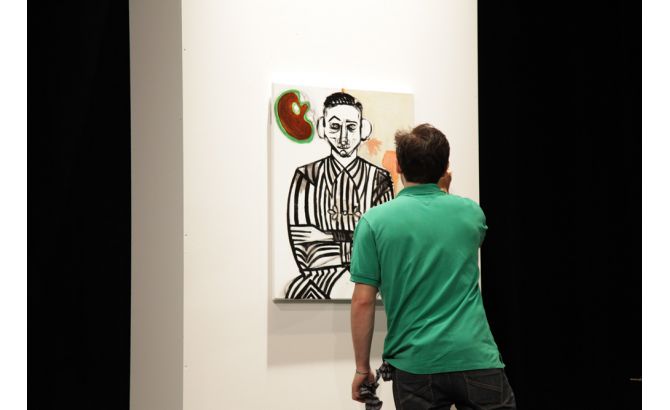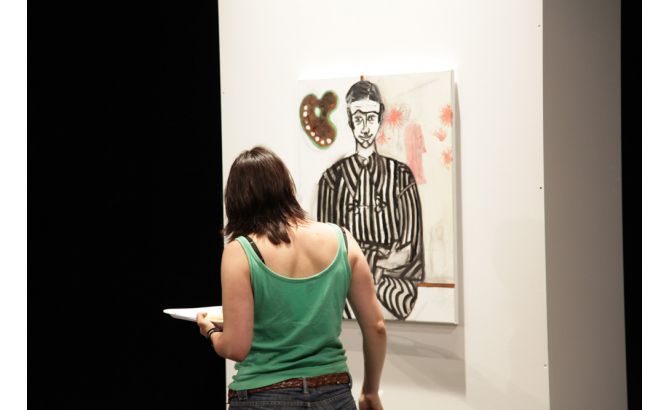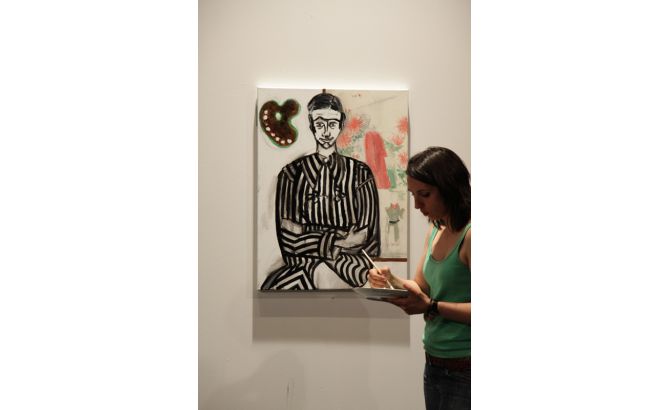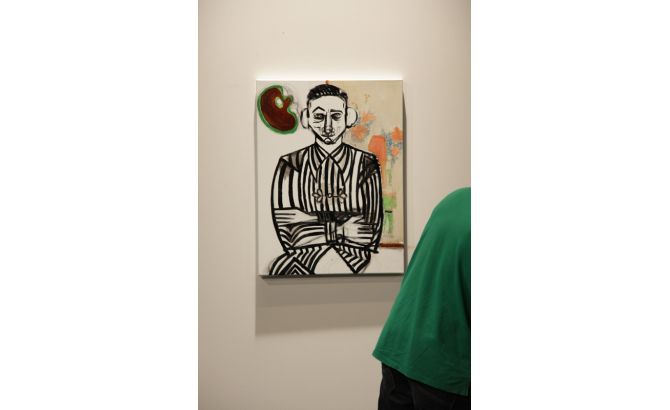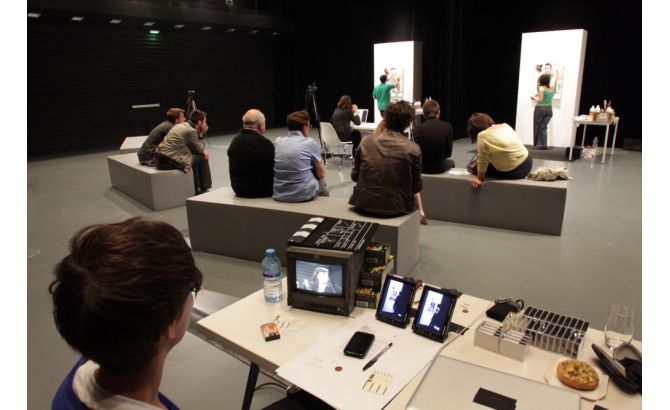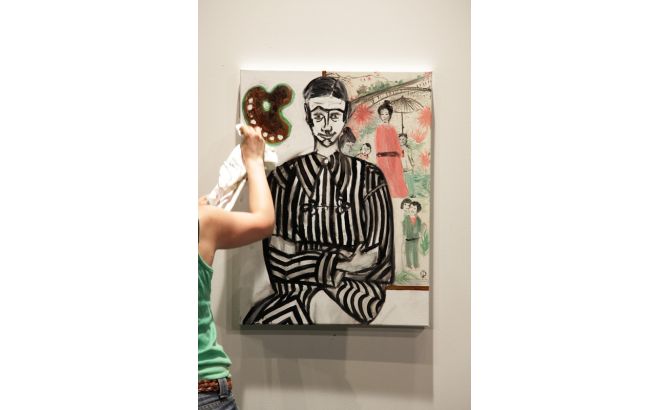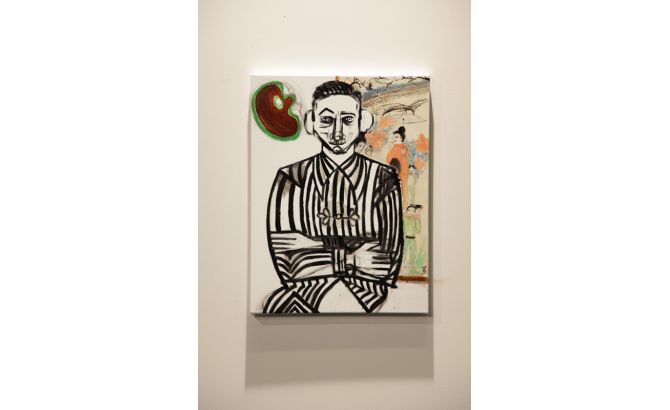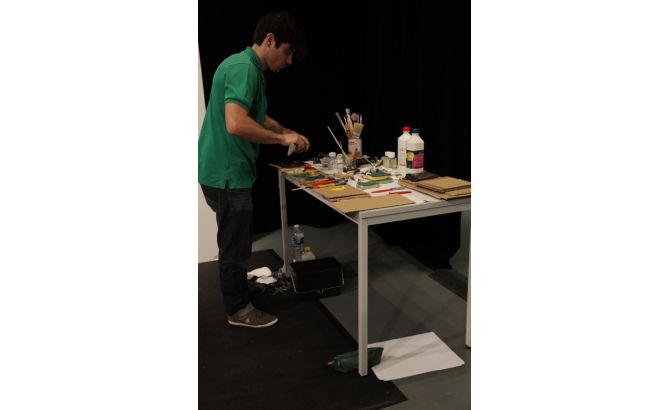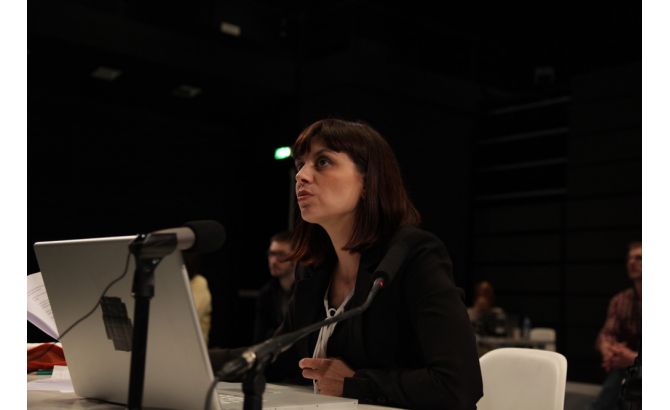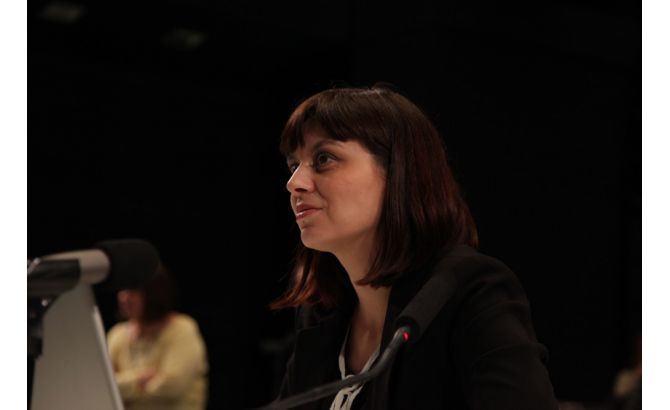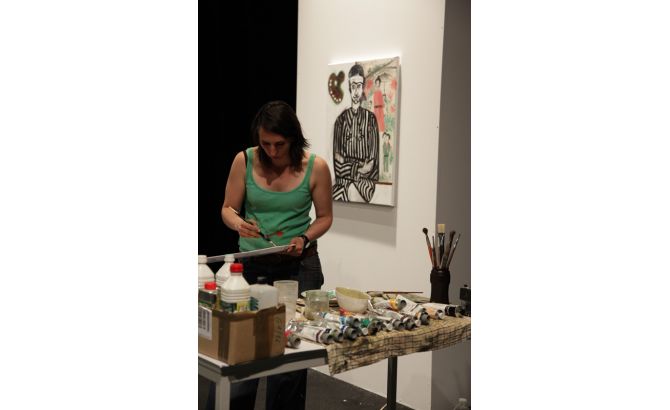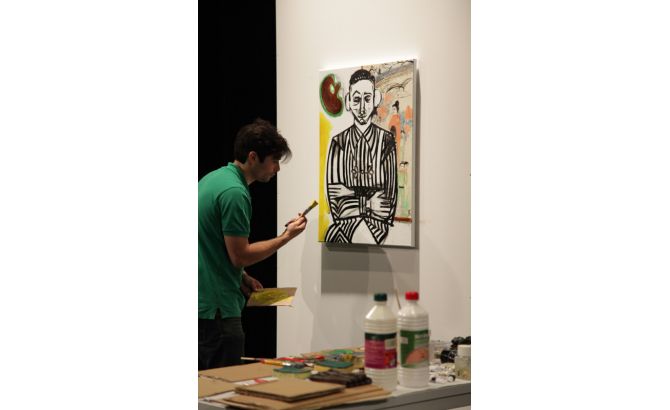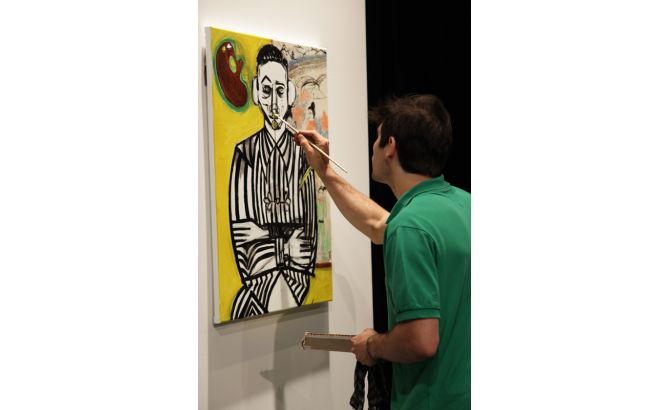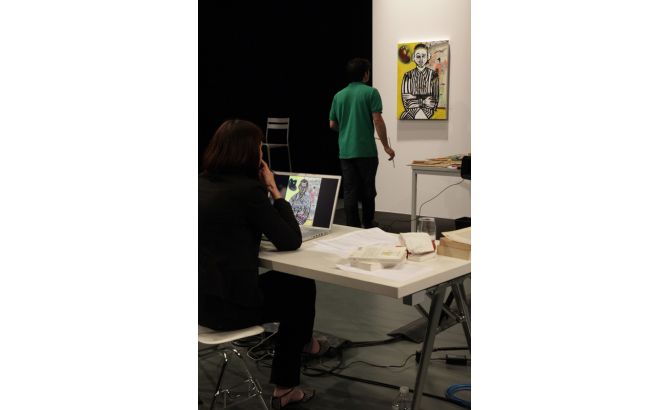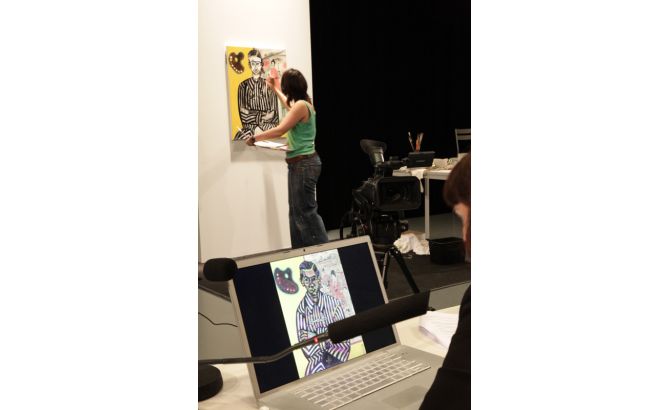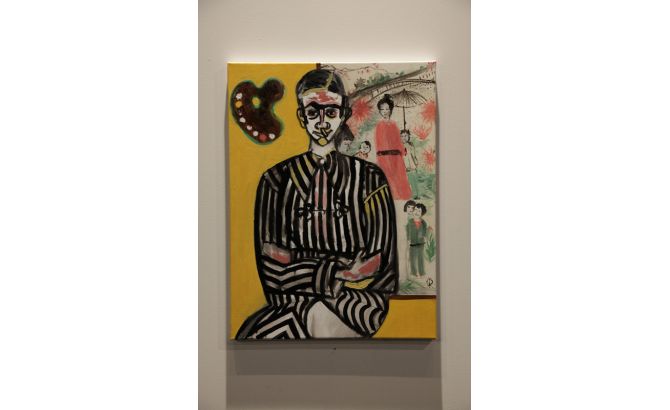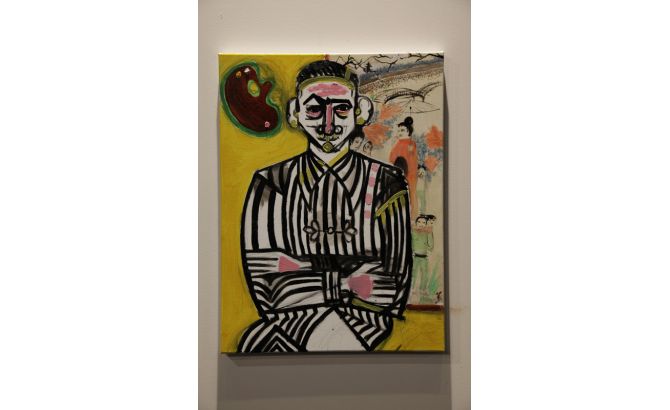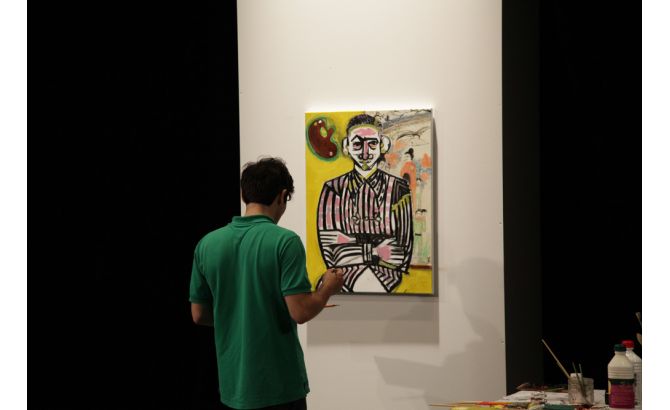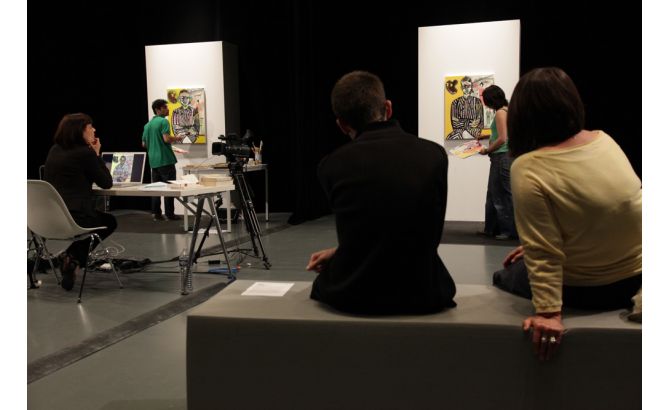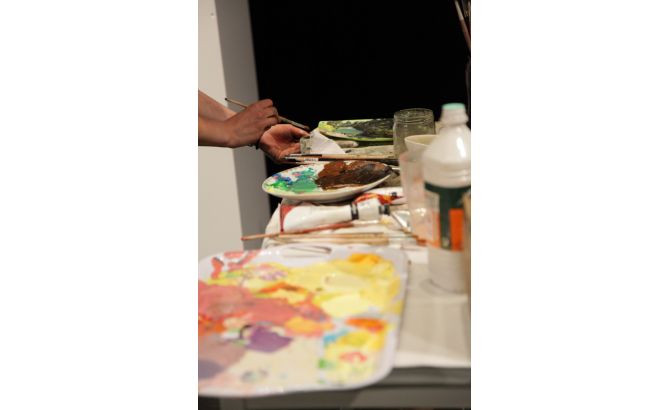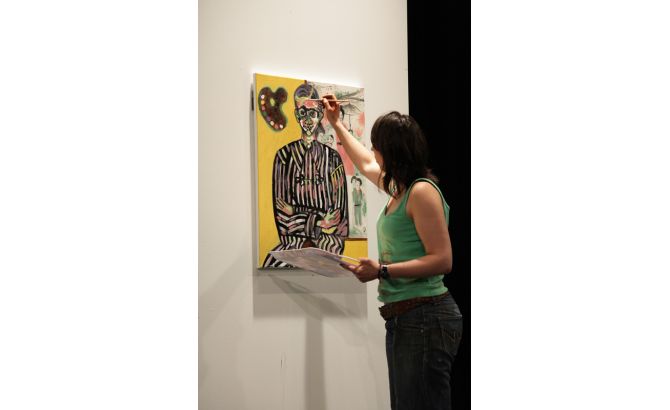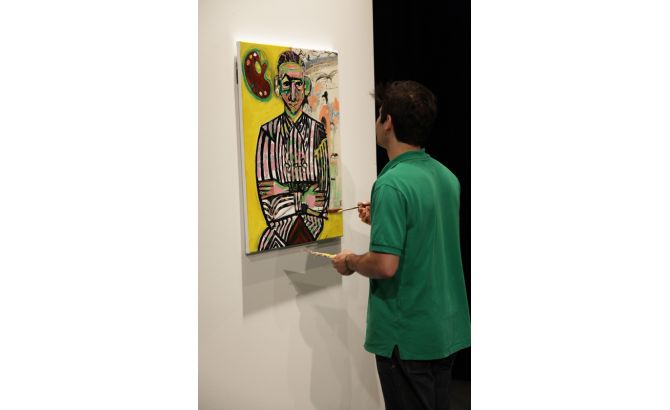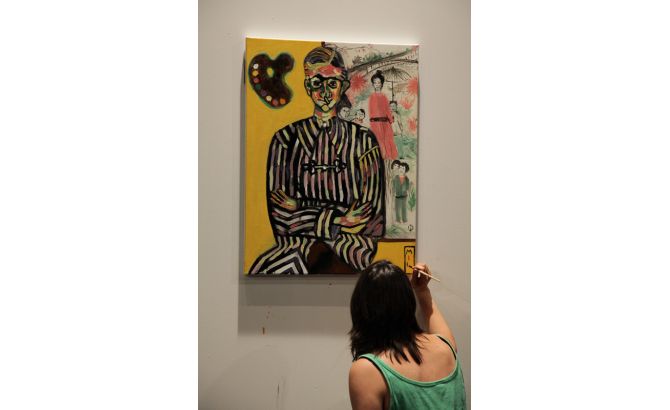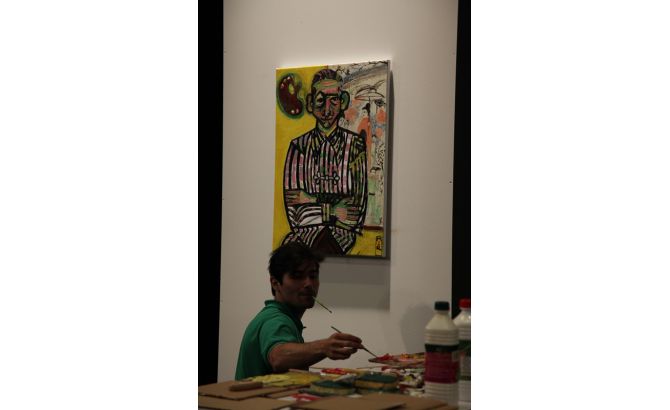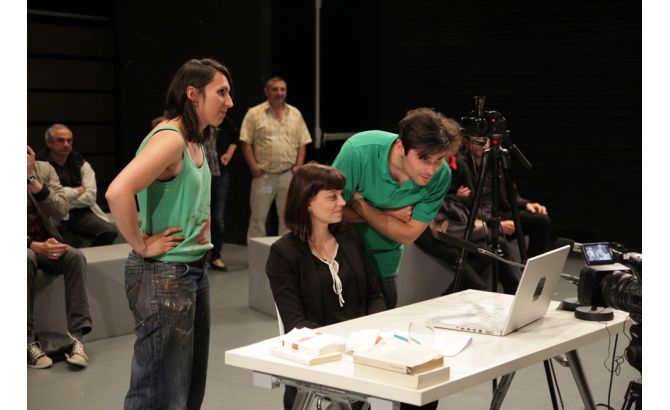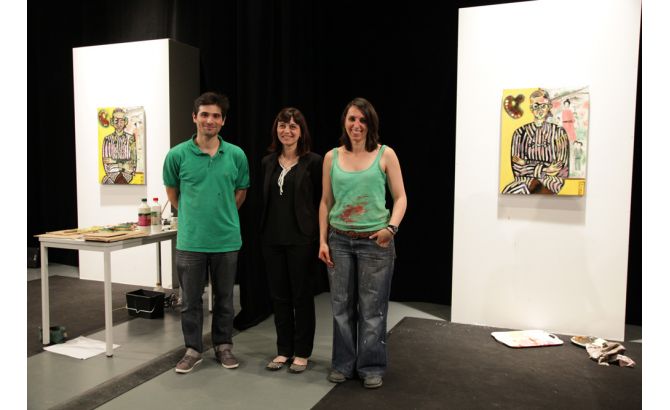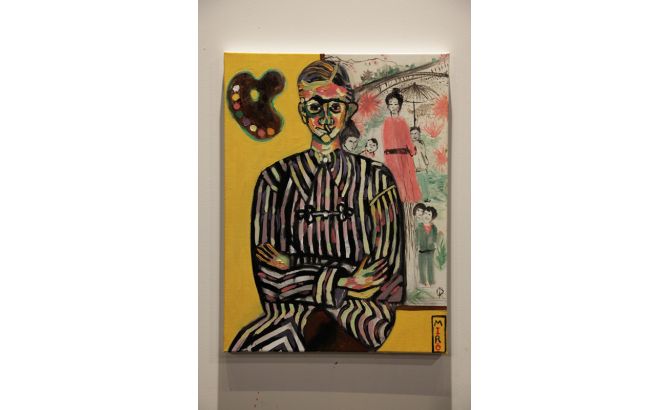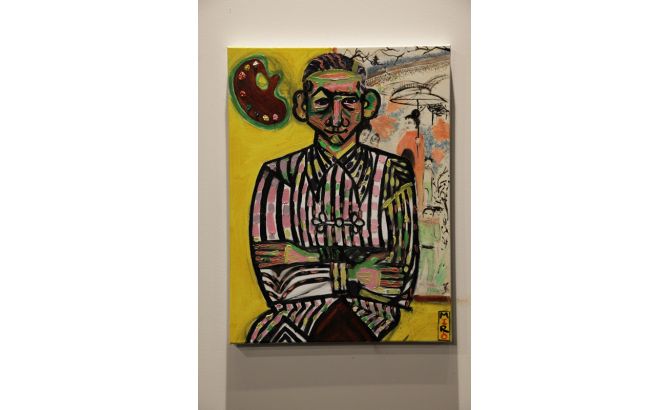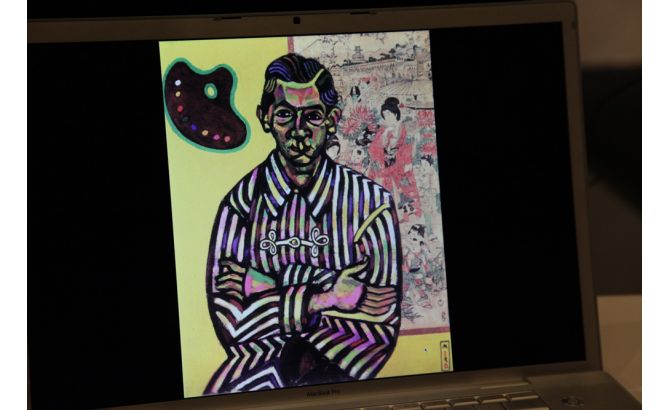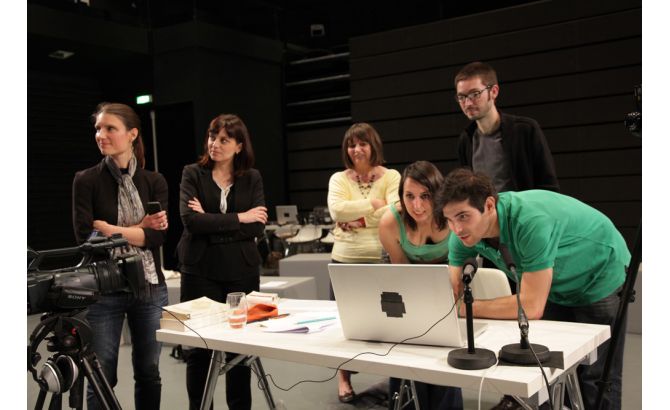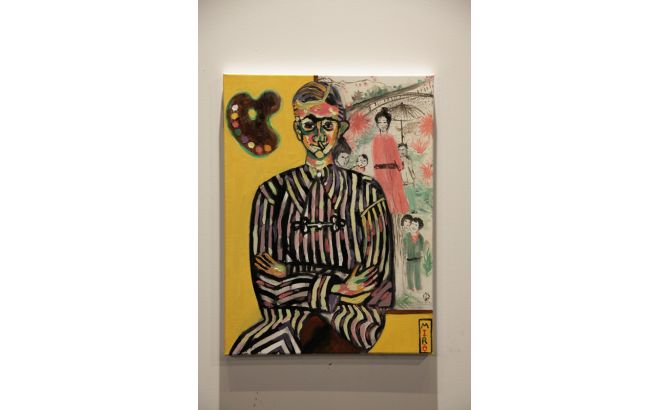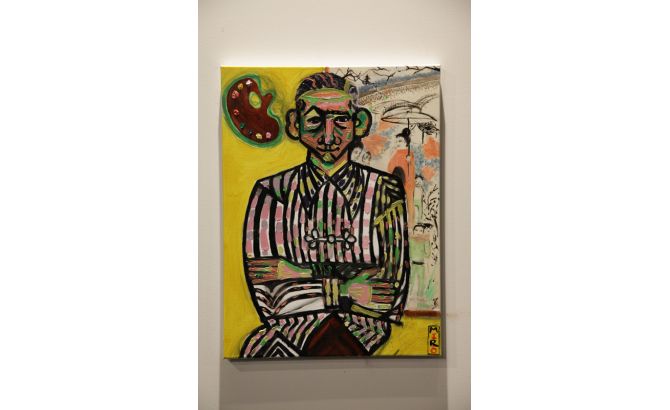Durational performance by Andrea Božić and Julia Willms, 8 hours
For Portraits, Andrea Božić and Julia Willms invited two painters, Elise Franck and Vivien Rousse, to paint a painting they have not seen by listening to art historian Claire Lahuerta describe it in words, live in front of the audience. Portraits is an intimate durational live performance and an audio-visual installation that asks questions about language, knowledge, skill, translation, communication, watching and authorship. Portraits was made for the framework of the 1917 exhibition at the Centre Pompidou Metz.
The original painting titled Portrait of Enric Cristòfol Ricart was made by Joan Miro in 1917 - a portrait of his close friend, an engraver and a painter himself. The painting contains a vivid contrast between the Japanese tradition - that relies on studying a model in minute detail with a strict division between the line and the colour - and the European expressionist style that, since the early 1900's, advocated a subjective representation of the emotional experience in art in order to evoke moods or ideas, with means of expression (shape, colour, language) that were used without regard for realism or tradition.
This painting also reflects an essential aspect of Miroʼs work, which is the presence of the masculine-feminine polarity. Here, the male character Enric Cristofol Ricart confronts the viewer standing in the same space-time as Miro while the women in the background play with kids in a garden, frozen in a virtual environment.
The issues that occupied Miro in this work are further elaborated within the setup of Portraits, where a number of spaces present in the work is multiplied (describer, painter, original, copy) and the gender issue is reflected in the multiplication of performers in the work.
Portraits is a derivate of the installation made by Božić and Willms in 2011, titled The Avant-Garde Never Gives Up. for which they asked two painters to re-produce the original painting made by Asger Jorn, one of the founders of Situationism: L'Avant-garde se rend pas, made in 1962. The work was one of his Modifications (détournements) in which he took a painting found at the flea market by an anonymous painter and overpainted it. Ultimately, L'Avant-garde se rend pas is a painting made by two authors. The project was commissioned and made within the frame of the exhibition Genius Without Talent at de Appel arts centre, Amsterdam
The Avant-Garde Never Gives Up is a derivate of the performance After Trio A which Božić and Willms made in 2010 based Yvonne Rainer's minimal dance Trio A (1966) and No Manifesto (1965). In After Trio A, they asked two dancers to learn the original Trio A dance phrase live in front of the audience during the course of the performance, copying from the monitor on stage. After Trio A was commissioned and co-produced by the Cover#2 Festival, Amsterdam, produced by ICKAmsterdam in co-production with Frascati.
Credits:
Concept and direction: Andrea Božić and Julia Willms
Painters: Elise Franck and Vivien Roussel
Describer: Claire Lahuerta
Commissioned and originally performed at the Centre Pompidou Metz, Metz, France within the framework of the 1917 exhibition.
